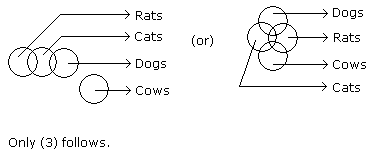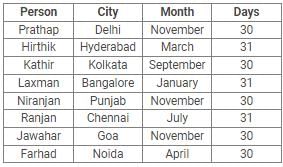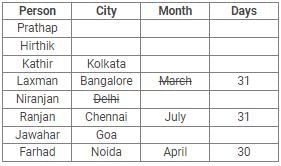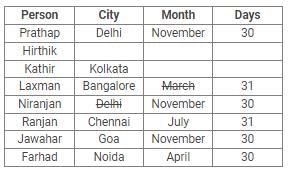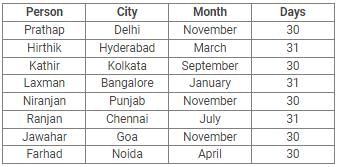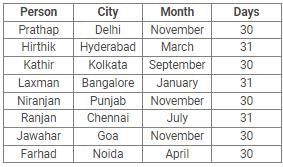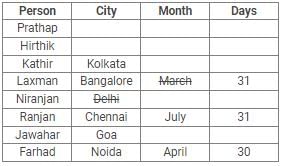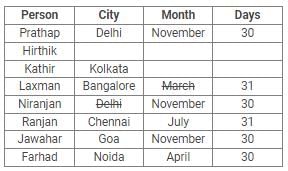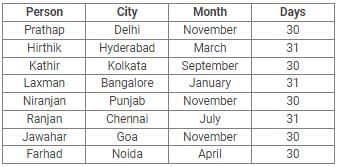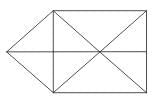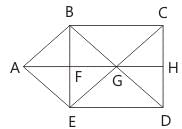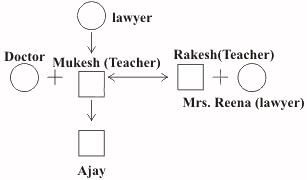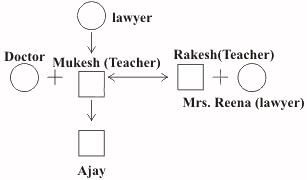ECGC PO Mock Test - 8 - Bank Exams MCQ
30 Questions MCQ Test - ECGC PO Mock Test - 8
Directions to Solve
In each of the following questions find out the alternative which will replace the question mark.
Question -
Eye : Myopia :: Teeth : ?
Directions to Solve: In each of the questions below consists of a question and two statements numbered I and II given below it. You have to decide whether the data provided in the statements are sufficient to answer the question. Read both the statements and
Give answer:
- (A) If the data in statement I alone are sufficient to answer the question, while the data in statement II alone are not sufficient to answer the question
- (B) If the data in statement II alone are sufficient to answer the question, while the data in statement I alone are not sufficient to answer the question
- (C) If the data either in statement I alone or in statement II alone are sufficient to answer the question
- (D) If the data given in both statements I and II together are not sufficient to answer the question and
- (E) If the data in both statements I and II together are necessary to answer the question.
Question: Who among P, Q, R, S and T is the lightest?
Statements:
I.R is heavier than Q and T but lighter than S.
II.S is not the heaviest.
- (A) If the data in statement I alone are sufficient to answer the question, while the data in statement II alone are not sufficient to answer the question
- (B) If the data in statement II alone are sufficient to answer the question, while the data in statement I alone are not sufficient to answer the question
- (C) If the data either in statement I alone or in statement II alone are sufficient to answer the question
- (D) If the data given in both statements I and II together are not sufficient to answer the question and
- (E) If the data in both statements I and II together are necessary to answer the question.
Statements:
I.R is heavier than Q and T but lighter than S.
II.S is not the heaviest.
Directions to Solve
In each of the following questions there are three statements. Which are followed by three or four conclusions. Choose the conclusions which logically follow from the given statements.
Question -
Statements: Some rats are cats. Some cats are dogs. No dog is cow.
Conclusions:
- No cow is cat.
- No dog is rat.
- Some cats are rats.
Statements:
E<D, F>C, D<F, C≥A=B
Conclusions:
I.A<E
II.F>B
III.E>C
IV.B>C
Directions: This question is based on five words given below.
SIR DEV GOT MIC SAT
(Note: The word formed after performing the given operations may or may not be a meaningful English word)
If the third alphabet in each of the words is exchanged with the first alphabet within the word and middle letter of all the words is changed to the next letter in the English alphabetical series, then how many words thus formed will not have a consonant at both third and second places?
Directions: Read the given information carefully and answer the questions given below:
Eight friends namely Prathap, Hirthik, Kathir, Laxman, Niranjan, Ranjan, Jawahar and Farhad were born in different months among January, March, April, July, September and November. Three persons were born in same month. Each of them belongs to different cities like Kolkata, Delhi, Chennai, Goa, Bangalore, Punjab, Hyderabad and Noida. All the above information is not necessarily in the same order.
The one who belongs to Punjab was born in the month having less than 31 days.
Kathir belongs to Kolkata.
Prathap and Niranjan were born in same month.
Persons who belong to Goa and Delhi were born in November.
Laxman belongs to Bangalore and he was born in the month having 31 days but not in March.
Farhad belongs to Noida and he was born in April.
The one who belongs to Kolkata was born in the month having 30 days after July but before November.
The one who belongs to Hyderabad was born in month having 31 days before April.
Ranjan was born in July and he belongs to Chennai.
Jawahar belongs to Goa and Niranjan doesn’t belong to Delhi.
Q. Who among the following was born in the month of November?
Directions: Read the given information carefully and answer the questions given below:
Eight friends namely Prathap, Hirthik, Kathir, Laxman, Niranjan, Ranjan, Jawahar and Farhad were born in different months among January, March, April, July, September and November. Three persons were born in same month. Each of them belongs to different cities like Kolkata, Delhi, Chennai, Goa, Bangalore, Punjab, Hyderabad and Noida. All the above information is not necessarily in the same order.
The one who belongs to Punjab was born in the month having less than 31 days.
Kathir belongs to Kolkata.
Prathap and Niranjan were born in same month.
Persons who belong to Goa and Delhi were born in November.
Laxman belongs to Bangalore and he was born in the month having 31 days but not in March.
Farhad belongs to Noida and he was born in April.
The one who belongs to Kolkata was born in the month having 30 days after July but before November.
The one who belongs to Hyderabad was born in month having 31 days before April.
Ranjan was born in July and he belongs to Chennai.
Jawahar belongs to Goa and Niranjan doesn’t belong to Delhi.
Q. Who among the following persons belongs to Hyderabad?
Study the following information to answer the given questions:
- In a family of 6 persons, there are two couples.
- The lawyer is the head of the family and has only two sons – Mukesh and Rakesh – both teachers.
- Mrs. Reena and her mother-in-law both are lawyers
- Mukesh's wife is a doctor and they have a son, Ajay._______________
Q. What is /was Ajay’s Grandfather’s occupation?
Study the following information to answer the given questions:
- In a family of 6 persons, there are two couples.
- The lawyer is the head of the family and has only two sons – Mukesh and Rakesh – both teachers.
- Mrs. Reena and her mother-in-law both are lawyers
- Mukesh's wife is a doctor and they have a son, Ajay._______________
Q. How many male members are there in the family?
A large cistern can be filled by two pipes P and Q in 15 minutes and 10 minutes respectively. How many minutes will it take to fill the Cistern from an empty state if Q is used for half the time and P and Q fill it together for the other half?
A pipe can fill a cistern in 8 hours. After half the tank is filled, three more similar taps are opened. What is the total time taken to fill the cistern completely?
What is Meena’s position with respect to Ruby?
I. In a row of 25 students, Meena is sitting 12th from right end of row and Ruby is sitting 20th from left end of the row.
II. Meena is 4th from right end and Ruby is 8th from left end.
Who has secured less marks among A, B, C, D and E?
I. D has secured less marks than only C and E.
II. B secured more marks than A
Directions to Solve
Choose the correct alternative that will continue the same pattern and replace the question mark in the given series.
Question -
4832, 5840, 6848, ?
Directions to Solve
Choose the correct alternative that will continue the same pattern and replace the question mark in the given series.
Question -
2, 8, 16, 128, ?
Directions: Study the following bar charts carefully and answer the questions given beside.
The following graph shows the number of people who attended the workshop A and B on 5 different days of a week.
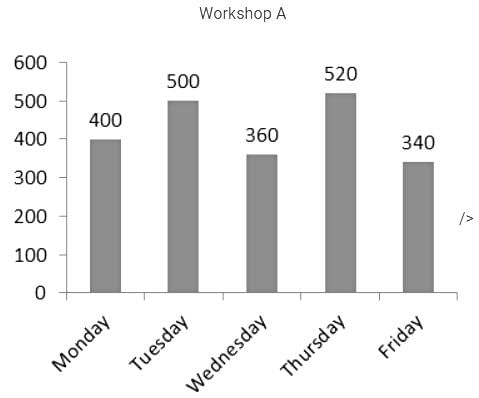
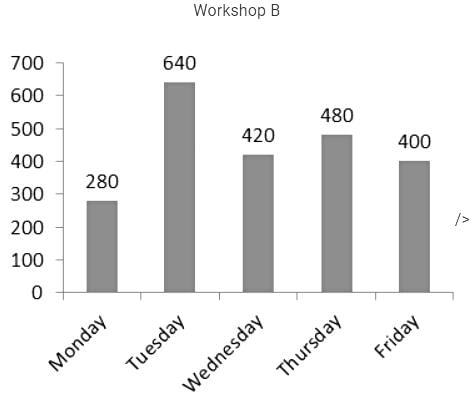
Q. If the number of females who attended the workshop A and B together on Tuesday is 460 and the ratio of male to female who attended workshop A on Tuesday is 3 : 2, then how many male members attended the workshop B on Tuesday?
Directions: Study the following information carefully and answer the questions given beside.
Mr. Dexter has four kids and all were born on same date of different years. They all have birthday today. Mr. Dexter wants to buy chocolates for all his kids. But he don’t want to give each kid equal number of chocolates.
He decides to do the following thing:
He will divide the height (in centimeters) by the sum of age number with weight (in kilogram).
He arrive at this formula –
Number of chocolate = height in centimeters/(weight in kilogram + age)
The number that will come is the number of chocolates that a particular kid gets.
His second youngest kid is twice the age of the youngest kid whose age is one-third the oldest kid. The second oldest kid is three year younger than the oldest kid. Weight of oldest kid is 36 kg which is numerically three times the age of second oldest kid, whose weight is four times the age of second youngest kid. Weight of the youngest kid is 40% less than the second oldest kid. Sum of weight of all four kids is 129 kg.
Q. After 5 years from this birthday, Mr. Dexter repeat the same method of distributing the chocolates. After five years, his youngest kid has gained 25% weight while the oldest kid has weight twice the youngest kid. He distribute 6 chocolates between youngest and the oldest kid. If their heights are equal then choose the correct option.
Directions: Study the following pie-chart and table carefully and answer the questions given below:
Percentage-wise Distribution of the Number of Mobile phones Sold by a Shopkeeper During Six Months. Ratio of mobile phones sold of Company A & Company B.
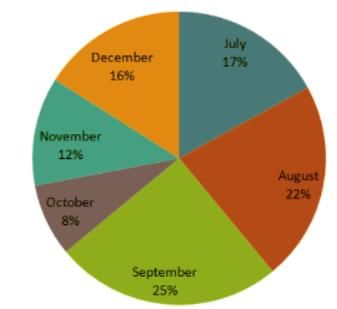
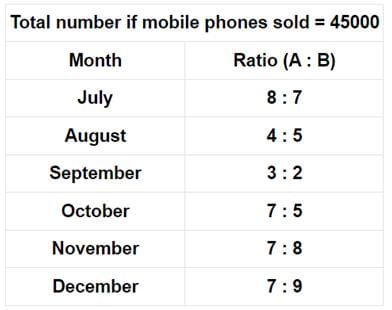
Q. What is the total number of mobile phones Sold of company B during August and September together?
Directions: In the following question, five statements are provided. These statements form a coherent paragraph when properly arranged. Select the alternative representing the proper and logical sequencing of these statements in the question.
1. But, equally, the benefits of reservation have not been distributed equitably.
2. There are inequalities and then there are inequalities within unequal entities.
3. The relatively rich and dominant sections among the backward castes have tended to take up a disproportionately larger share of the reservation pie.
4. Moreover, large segments of the weaker sections and backward classes continue to have no access to quality education or meaningful employment.
5. That reservation in jobs and education did address socio-economic disparities in India to some degree is true.
Directions: In the question given below there are two statements, each statement consists of two blanks. You have to choose the option which provides the correct set of words that fits both the blanks in both the statements appropriately and in the same order making them meaningful and grammatically correct.
I. The government has ________ over Rs 35,000 crore in cess for the welfare of construction workers employed in the high-risk and hazardous construction industry that is mostly ________ by private companies.
II. Chinese mobile phone maker Huawei said it never ________ or stored Facebook user data, after the social media giant acknowledged it gave access of data to such handset manufacturers albeit in a ________ way.
Directions: Read the passage and answer the questions that follow:
More than three lakh workers will be employed in the solar and wind energy sectors to meet the country’s target of generating 175 gigawatts of electricity from renewable sources by 2022, an International Labour Organization (ILO) report said. The report titled, World Employment and Social Outlook (WESO) 2018: Greening with Jobs, quoted from a study conducted by the Council on Energy, Environment and Water (CEEW) and the Natural Resources Defense Council (NRDC), on the changes in sectoral employment that will occur in order to meet India’s target. The study was based on surveys of solar and wind companies, developers and manufacturers.
“India is rapidly increasing its share of renewable energy sources, but still relies on coal, oil, natural gas, and the related carbon emissions for 80% of its electricity,” the report released on Tuesday said. This formed a small part of the report, which focused on the trajectory of the labour market in the backdrop of environmentally sustainable production practices. Tackling the misconception that green economies pave the way for economically undesirable outcomes, the report said rather than a trade-off between the two, their development goes hand in hand. According to the ILO report, there will be a net increase of 18 million jobs across the globe as a result of environmentally sustainable measures taken in the production and use of energy. This net figure is based on the estimation that the resultant job losses of six million will eventually lead to an increase of 24 million jobs as greener practices are adopted. Of this, 14 million jobs created will be in Asia and the Pacific.
“The transition to a green economy will inevitably cause job losses in certain sectors as carbon and resource-intensive industries are scaled down, but they will be offset by new job opportunities,” the report said. However, the report emphasised that the net increase of 18 million jobs is dependent on a supportive policy framework to aid displaced workers and skill development programs to help ease them into jobs that require new skills. It mentioned that although India does have a specific body or council to address the skills development for green transition, it has no existing institutional mechanism to anticipate skills needs and adapt training provision. Of the 27 countries surveyed, India and seven others fall under this category. “Developing and emerging economies have relatively weaker institutional capacity for integrating skills and environmental sustainability,” the report said.
The report stressed on the urgency of economies adopting sustainable practices, adding, in 2013, humanity used 1.7 times the amount of resources and waste that the biosphere was able to regenerate and absorb. The report reads, “It is striking that in a context of scarce resources and limited ability to absorb waste, current patterns of economic growth rely largely on the extraction of resources, manufacturing, consumption and waste.” It explained this urgency from the perspective of the job market by connecting labour productivity to climate change.“Looking ahead, projected temperature increases will make heat stress more common, reducing the total number of working hours by 2% globally by 2030 and affecting workers in agriculture, and developing countries,” the report said.
Q. As per the passage, which of the following could be a/some reason/s for the misconceptions surrounding green economies.
I. There is a belief that adopting a green economy would lead to loss of jobs which could severely impact the economy.
II. The shift from traditional energy sources to renewable energy would be expensive.
III. The technological capability required to transform into a green economy is still in the elementary phase.
Directions : Read the passage carefully and answer the questions given below:
For generations, companies have been selling fair skin to young Indian women, promising better marriage and employment prospects. However, over the last few years, men have become a favoured target audience. This followed the realisation that the Indian alpha male, denied a choice in male-specific grooming products, had been using women’s fairness creams all along. Until the mid-2000s, deodorants and shaving creams were the only grooming products advertised for men. But India’s largest consumer goods companies sensed an opportunity, and launched a slew of fairness products for male consumers.
In India, as in other parts of the world, light skin is the culturally accepted and endorsed form of beauty, and children absorb this message at a young age. According to a 2015 research report by Nielsen, urban Indian men believe that fair skin can improve professional prospects. The cultural pressure to look fair, argues Kiran Khalap, branding expert and founder at communications consultancy Chlorophyll, is something inherent in our society, not manufactured by companies. “And it is certainly not restricted to India: China and Japan have had skin-whitening products for centuries, well before they met Western ‘white’ people,” he said. However, there is a growing awareness among consumers that companies are exploiting their insecurities, and critics have taken some of the biggest fairness brands, and the celebrities who endorse them, to task for their casual discrimination.
Earlier this month, Bollywood actor Abhay Deol took to Facebook to trounce his fellow actors who earn millions from endorsing fairness creams. This comes a few years after actress Nandita Das launched the “Dark is Beautiful” campaign to encourage Indians to embrace a wider definition of beauty. These efforts are slowly making a difference, increasing awareness and encouraging consumers to take pride in their natural skin tones. That means Indian companies will eventually have to change their approach. “My sense is that brands will wake up to the new reality, and you will see propositions reworked around clearer skin (and) glow, rather than pure fairness,” Leo Burnett’s Sinha said.
Rajesh Krishnamurthy, business head for the consumer product division at The Himalaya Drug Company, believes that over time the men’s grooming category will evolve to include a wider range of products, including those for normal skin, just like in the women’s skin care category. “Companies are increasingly realising that you cannot continue to bullshit consumers anymore; these are educated young men who will question what you sell to them,” said Shantanu Deshpande, co-founder and CEO of the male-grooming startup Bombay Shaving Company.
Q. What were the findings of the 2015 research report by Nielsen?
In general, a file is basically a collection of all related_____________.
Why are some critics concerned about the Waqf (Amendment) Bill, 2024?
Which neighboring country received the highest aid allocation in the Union Budget 2024-25?



